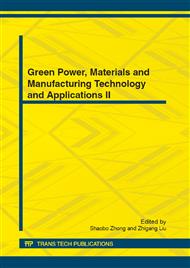p.282
p.287
p.292
p.296
p.301
p.306
p.311
p.315
p.320
Application of Fracture Prediction and Modeling Technology in Tight Sandstone Gas Reservoir in Xinchang Gas Field of Sichuan Basin
Abstract:
To adopt new generation global optimization discrete scanning technology in 3D space, the seismic event occurrence can be scanned accurately. By means of anslysing the relationship between fracture density of wells and seismic geometry attributes scanned precisely, it is concluded that pixel imaging attribute is effective to predict large scale fracture and curvature for small scale fracture. Based on fracture analysis, making use of lithology and curvature as constraints and starting from the well data, the density of the large scale fracture with seismic level and small scale net fracture can be predicted. According to the structure and production condition of wells, the area with fractures developed and in structural high is the advantageous area for exploration and development.
Info:
Periodical:
Pages:
301-305
Citation:
Online since:
November 2012
Authors:
Price:
Сopyright:
© 2012 Trans Tech Publications Ltd. All Rights Reserved
Share:
Citation:


